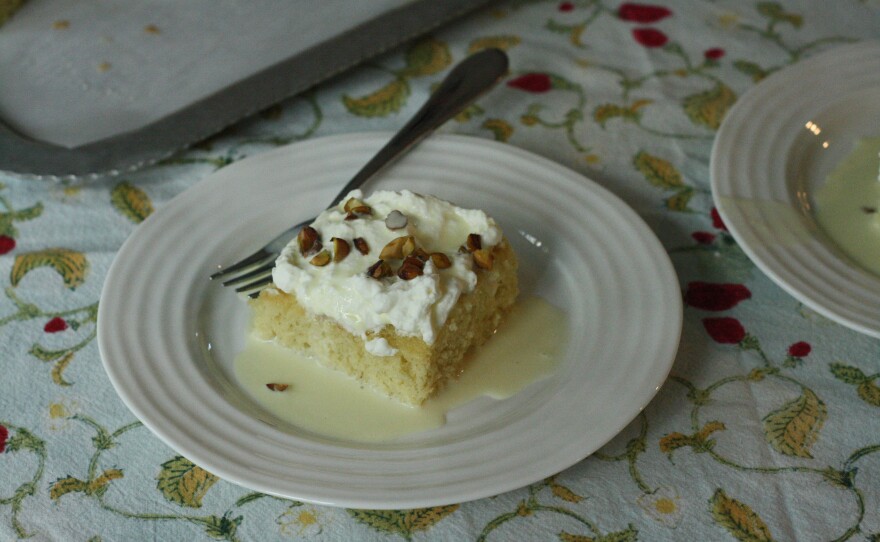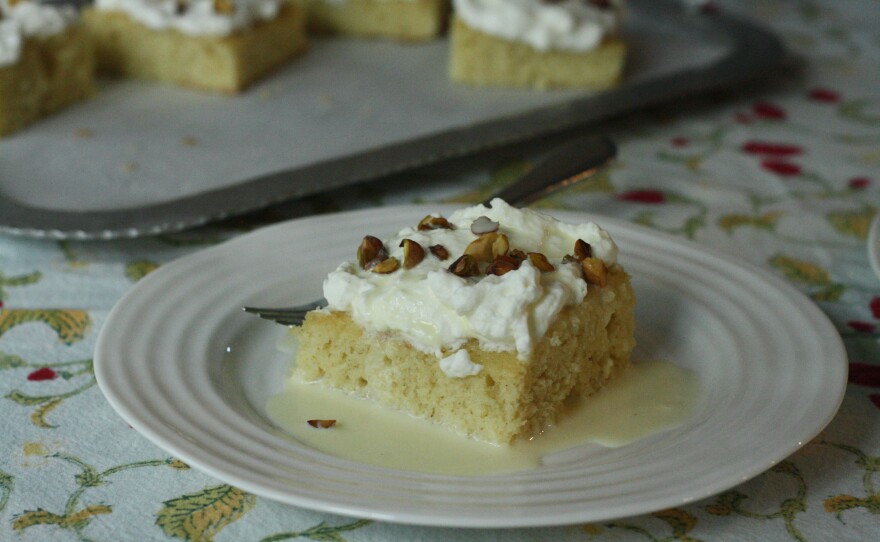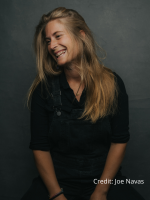When I heard that Stephanie Cave of Provincetown is growing her own saffron, I was surprised. I guess I knew that saffron probably comes from a plant, but I’d never thought about which plant, and I expected it to grow somewhere tropical or exotic. But it turns out we can plant saffron right here on Cape Cod.
Stephanie: I was looking at different things to plant in the fall, for my garden because I have somewhat newly established garden here, and I came across the saffron crocuses and I thought how could I not try these things?
Elspeth: So is the saffron crocus the way that saffron always grows or is this like an unusual New England version?
Stephanie: No—my understanding from the research that I've done is that that's where saffron comes from and part of the reason why it's so expensive is because it's laborious to harvest and each flower only produces three tendrils of saffron.
Three tendrils per plant. The tendrils are the flowers stigmas and it takes about thirty tendrils to make a half teaspoon of the spice.
Stephanie: That’s ten plants, you know, that's a lot that's a lot of bulbs.
Elspeth: Yeah, I'm trying to imagine like a saffron farm.
Stephanie: Yeah. I mean seven—there was something a pound is like seventy-five thousand flowers harvested or something I read! I mean, yeah.
Most of the saffron on the world market comes from Iran, Spain, India, and Afghanistan. But saffron crocuses are becoming increasingly popular with backyard growers in the U.S. who are attracted to both the spice they produce and their vibrant purple flowers.
Stephanie: So these are bulbs. They're kinda—
Elspeth: Hairy!
Stephanie: Yeah, and they kind of shoot up these like tiny like blades of greenery which look like a cross between grass and chives. And they stay at that I've found them to stay at that point until they're ready to produce flowers the next year.
Elspeth: And do they bloom in the spring? I associate crocuses with the spring, or are these later?
Stephanie: They bloom in the fall.
Which means Stephanie has just completed her harvest.
Stephanie: You can see here I've got about well, there's about like twenty-five and I used some for a cake that I made. And then this was the last harvest. So there's about maybe forty in there.
Stephanie told me she’s not so into the well-known saffron dishes like paella or Moroccan chicken but she is experimenting.
Stephanie: I cook a little bit but I mostly bake, so this is a Middle Eastern Dish. It's a saffron milk cake and it has saffron in the sponge and then saffron in the milk— so then you soak the sponge in some of the milk that also has saffron in it and that's whipped cream and pistachios on top.
Elspeth: Yum, so a little bit tres leches style?
Stephanie: Yes, a Middle Eastern take on that.
Stephanie has chilled the cake on its own without the milk, and she pulls it out along with a pitcher of slightly-orange tinged milk.
Elspeth: Okay, so we're pouring on this milk that's that has saffron. Anything else?
Stephanie: Yes it has saffron, condensed milk, heavy cream, and that’s it.
The cake is dense and moist even without this liquid, but then with the milk on top?
Elspeth: Oh my god. It's really, really, really good. Wow.
It’s enough to convince me that I’ll be planting some saffron bulbs this fall in hopes of recreating Stephanie’s cake—and maybe also making a few paella’s next year.
Here's a link to learn more about growing saffron.
And here's a link to the cake recipe.
The Local Food Report is edited by Viki Merrick, and produced by Atlantic Public Media in Woods Hole.










